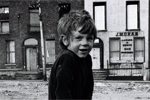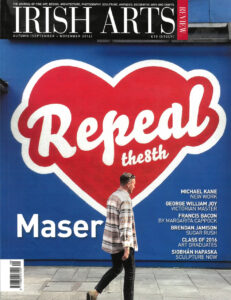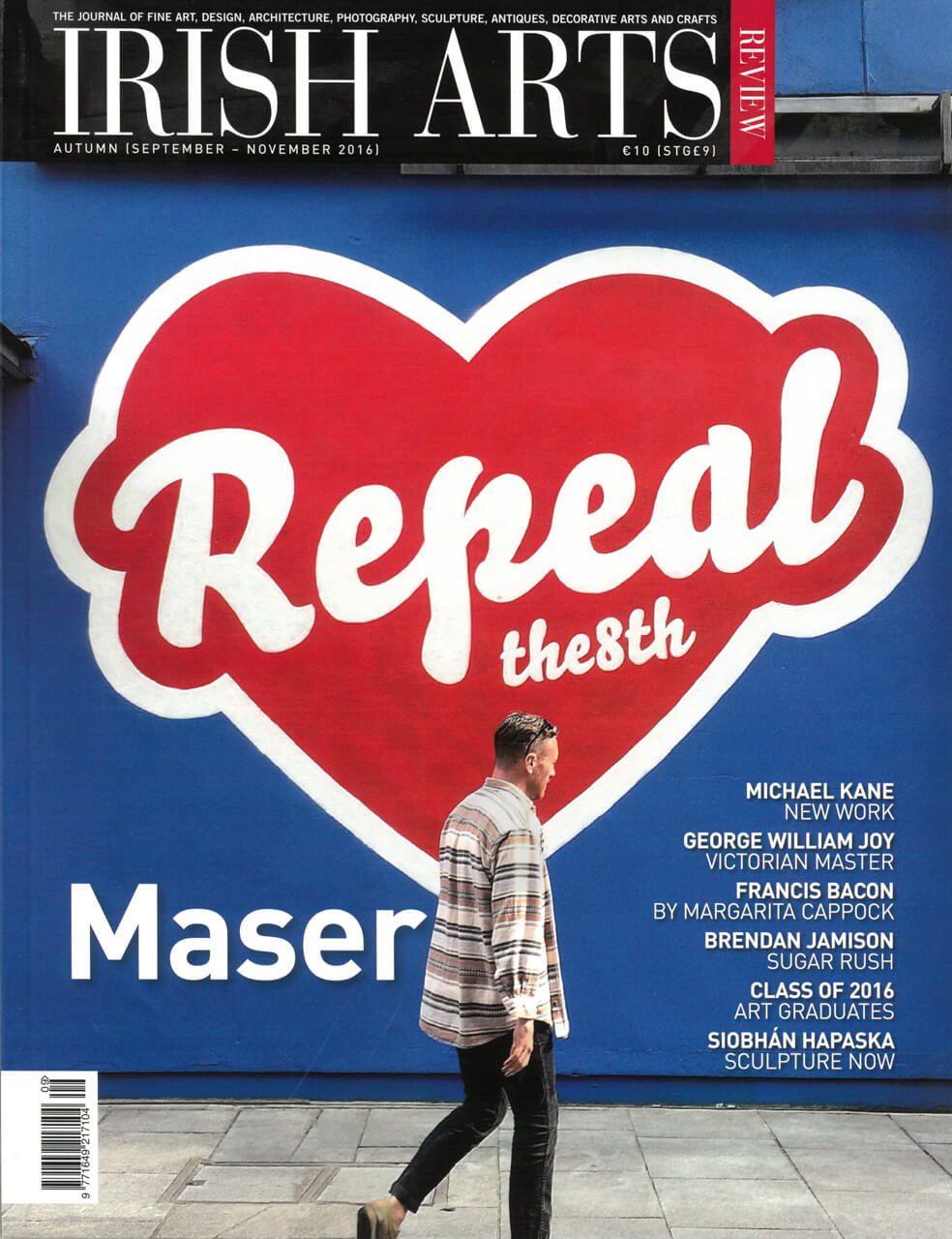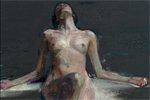

Stephanie McBride welcomes the reissue of Dublin: The Heart of the City characterized by Brendan Walsh’s elegantly composed black and white photography with essays by Ronan Sheehan.
First published by Brandon in 1988, the year of Dublin’s ‘Millennium’ celebrations, Dublin: The Heart of the City presents a startling contrast to the packaged history of official Ireland. Now widely regarded as a classic study, the collection of photographs by Brendan Walsh and accompanying essays by Ronan Sheehan was out of print for decades until its recent reissue by Lilliput Press.
It traces the fracturing and fragmentation of the city centre’s working-class community through decades of bad planning, neglect and abandonment by the powers that be. As the dockyards became containerized, most of the traditional labouring jobs disappeared almost overnight, plunging the community into a deepening crisis of mass unemployment and harrowing poverty, worsening housing conditions and an escalating heroin epidemic.
The term ‘inner city’ came into parlance around that time, though not among the locals. As Sheehan explains, the term originated in the US, among sociologists and town planners. And as writer Peter Sheridan notes in his original foreword, it then became a crude media shorthand ‘for all things negative’. And, he added, ‘I propose its abolition.’
Walsh, who worked as an assistant to leading international photographer Evelyn Hofer in her 1960s Ireland series, shares with her an empathy with his subjects. His photographs fuse the political and poetic, as both a depiction of social reality and an aesthetic practice. The images are responsive, intuitive and elegantly composed, catching the unaffected affection in a child’s smile or the theatrically-charged moment of a boy in mid-leap, with no need for any (pre-digital) doctoring to reinforce the spectacle.
Two young boys stand in the rubble of a vacant lot, one wandering around with eyes down, the other leaning like a cricketer on his stick and grinning easily at the lens. In the background of ghostly terraces – doors blocked up in corrugated sheeting, windows broken or shuttered – stands J Moran’s, once a proud purveyor of Ladies’ and Gents’ hairdressing, now stranded amid the dereliction and decay.
A simple portrait of a mother and barefoot daughter in an urban wasteland has powerful resonances with Dorothea Lange’s legendary Great Depression image Migrant Mother. Common Irish names in several photographs – Keegan, Moran, Flynn – root these images in the local and familiar. Walsh’s camera also captures a condescending priest leaving the Pro-Cathedral, presenting in strong visual terms the gap between comfortable clergy and poor parishioners. Above the door are the words of St John: Perhibere testimonium veritate, bear witness to the truth. In another image, Our Lady of Lourdes Church with its shrine to local man Matt Talbot looms in front of tall tenements with eerily blank windows. The spacious parking lot is largely empty; indeed, the vast majority of Walsh’s images have no traffic whatsoever – a strong reminder of how the car had not yet come to dominate these changing streetscapes.
In another photograph a young girl, smartly dressed with shining hair, is framed by unforgiving concrete walls. She is holding a baby – which turns out to be a doll – upside down by an ankle. The image becomes even more startling and surreal when it turns out that the doll is headless and that its head is in the girl’s other arm.
Another image with its straight lines and symmetries is more expressionistic and existential: an expanse of grey slabs leads to a distant space framed on either side by high-rise flats. As the pale light glances off their facades, the eye is drawn to a silhouetted lone figure in a communal stairwell in the centre of the picture: a local everyman, hemmed in by bars and concrete.
The initial hopes for regeneration of the derelict wastelands to serve the local people were largely dashed, as the business parks and towers of international finance sprang up on the skyline. Yet while the photographs and Sheehan’s text tell it like it is, there are key moments of positive change, such as the Gregory Deal which brought improved conditions, some of them long-lasting. Tony Gregory’s legacy of change and local action endures in this part of the city, with the knowledge that, as Peter Sheridan’s foreword reminds us, people can change their lot in history.
There are important affinities between historical research and looking at ‘old’ images such as these. Photographs, Siegfried Kracauer once wrote, ‘help us to think through things not above them.’ Although photographs are still images, their meaning or currency is never static. Viewing them, with the history and hindsight of the intervening years, prompts key memories of displaced communities.
This timely re-publication is a reminder of the significance of the links between image, history and memory, and the need to continue to revisit and learn from those linkages. As Sheehan writes in his 2016 afterword, Walsh’s photographs touch upon and reach ‘a Dublin consciousness’, bearing witness to the truth.
Stephanie McBride is a regular contributor to Irish Arts Review.



